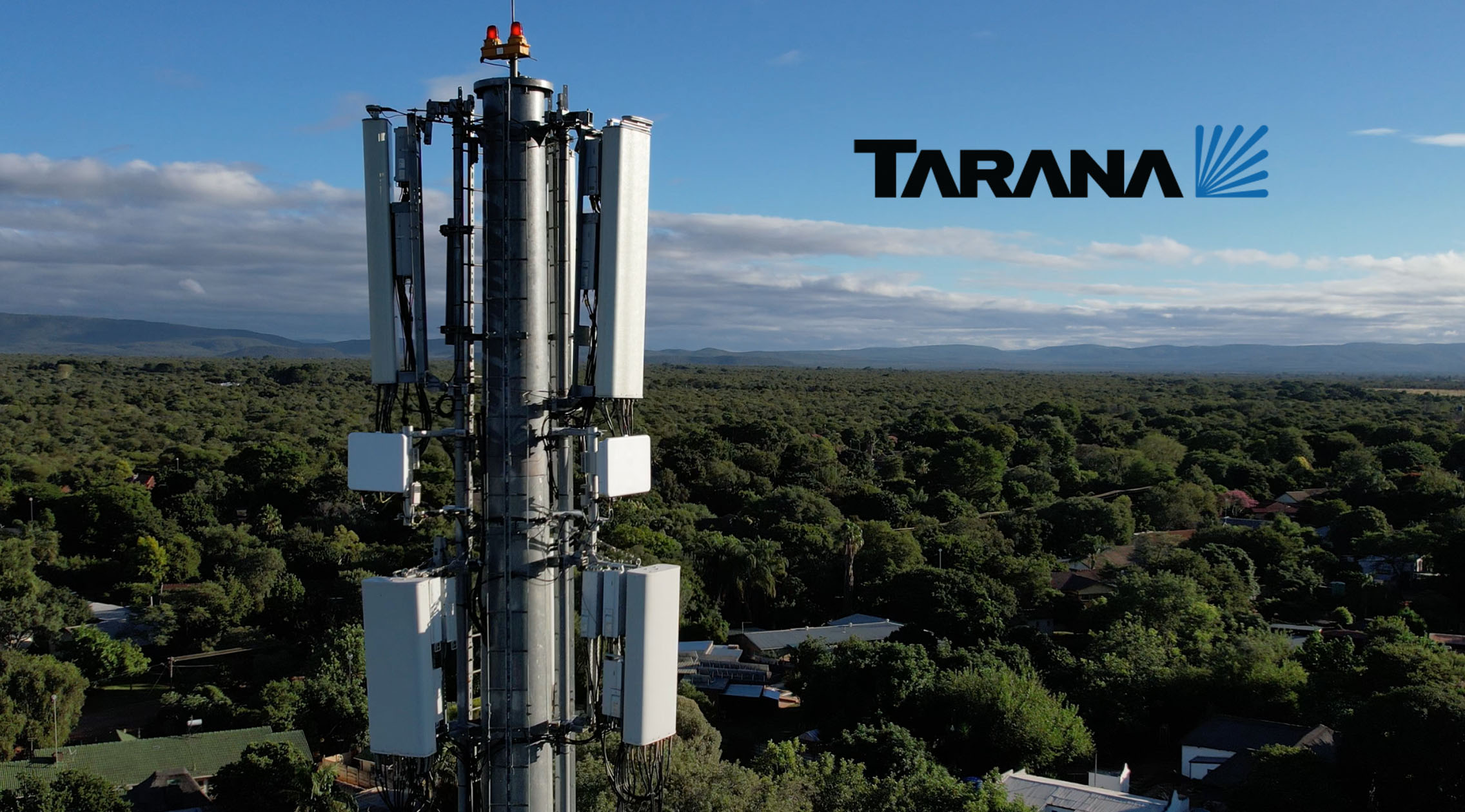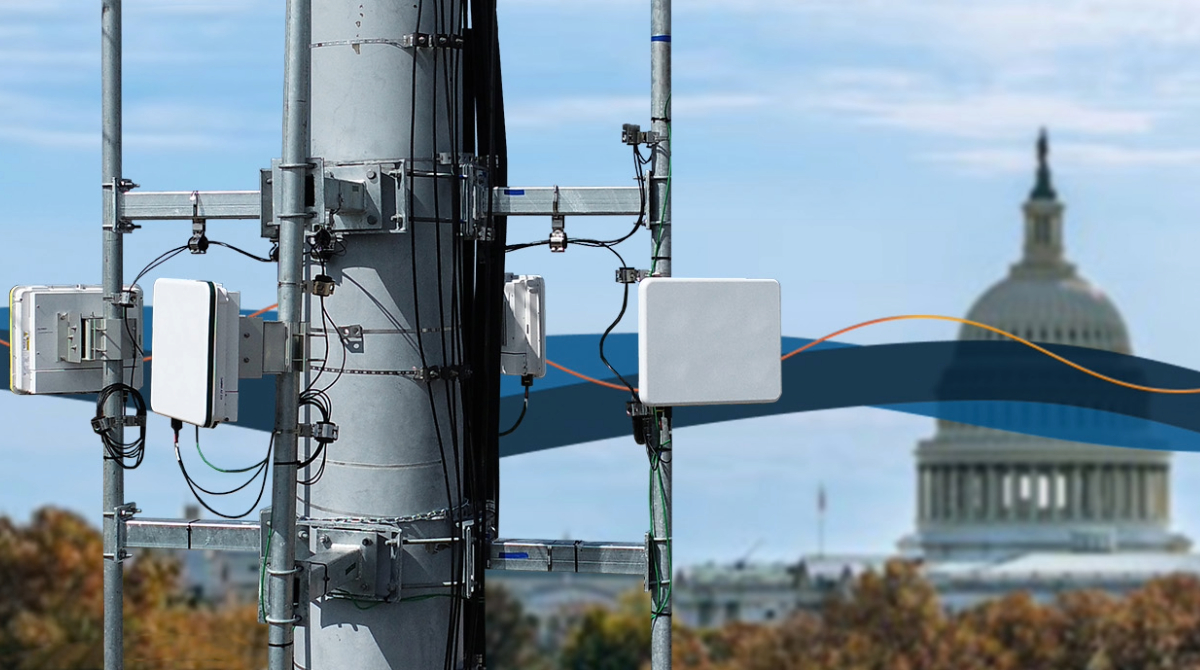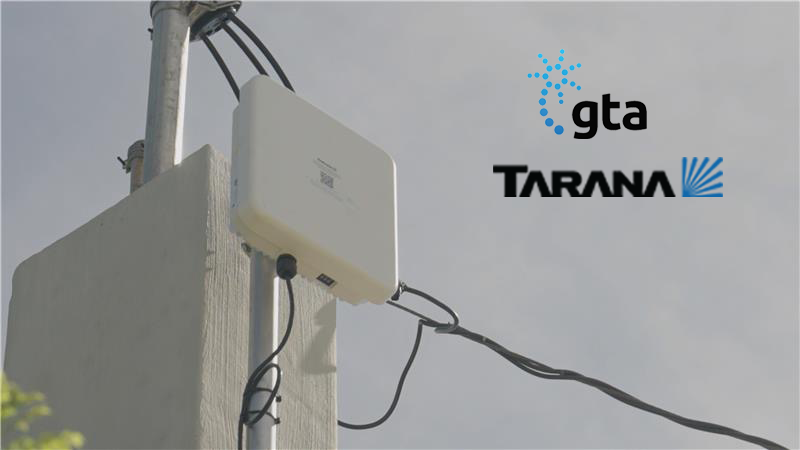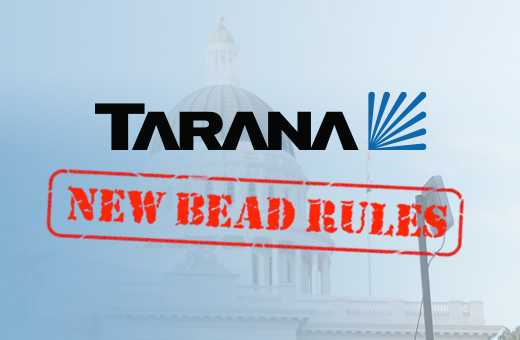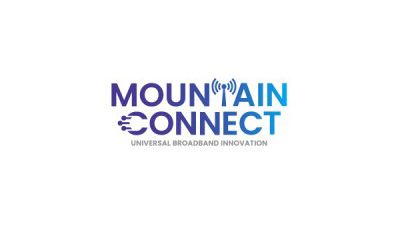About

Tarana’s co-founders set out to rethink fixed wireless access in 2009. Through a decade of R&D and over $400M of investment, Tarana created ngFWA — an entirely new technology built from the ground up to deliver reliable, high-speed residential broadband. Gigabit 1 (G1), our ngFWA platform, overcomes previously insurmountable industry challenges for service providers in every market to deliver better broadband more efficiently. G1 started production in mid-2021 and has since been embraced by more than 250 operators in 24 countries and 47 US states.
Tarana’s co-founders set out to rethink fixed wireless access in 2009. Through a decade of R&D and over $400M of investment, Tarana created ngFWA — an entirely new technology built from the ground up to deliver reliable, high-speed residential broadband. Gigabit 1 (G1), our ngFWA platform, overcomes previously insurmountable industry challenges for service providers in every market to deliver better broadband more efficiently. G1 started production in mid-2021 and has since been embraced by more than 250 operators in 24 countries and 47 US states.
A Deeper Dive, by Subject
Want to know more about Tarana? Expand the categories below to gain a deeper understanding of our company, industry, and more.
The Company
Our mission is to accelerate the deployment of fast, reliable, and affordable internet access and to close the global digital divide sooner than previously thought possible.
G1 (and successors in progress). The world’s first next-generation fixed wireless access platform, which introduces a complete revolution in delivering real broadband service at mass scale in a fraction of the time and cost of current alternatives.
Cloud management for G1 installations — equally revolutionary in configuring, controlling, providing intelligent visibility into, and troubleshooting complex network operations.
Over 250 internet service providers in 24 countries, coming from all categories (incumbents and new entrants, large and small, wireless and wireline in origin, licensed spectrum and not).
An extraordinarily talented, high-functioning, and quickly-growing crew of over 400, endowed with 23 PhDs and 74 masters degrees among them.
Tarana is headquartered in Milpitas, California, with additional research and development in Pune, India.
Our exec team is applying an outstanding combination of experiences driving hyper-scaled commercial success in tech (at Amazon, DISH, Infinera, Nokia, Ruckus, and Xircom) as well as fundamental advances in radio network technology (at ArrayComm, BeamReach, Qualcomm, and Tarana). Their roles and bios appear below.
Our Market
The network performance and economics of our new approach to broadband make it a good fit for subscribers across a wide range of market conditions and household densities — but we’re leaving very remote areas with essentially no infrastructure (and the oceans) to satellites, and super-dense apartment building neighborhoods to fiber or rooftop microwave radios.
Our detailed, country-by-country analysis of the world’s broadband challenges and opportunities indicates a total addressable market (TAM) for ngFWA measured in many 10s of $B. As we note on our mission page, 80% of the world’s 2.3B households need a new fixed access solution.
Competition
Designed from the ground up specifically for ngFWA, G1 delivers fiber-class broadband over non-line-of-sight links, in unlicensed spectrum (enabled by a true industry first in interference cancellation), at a fraction of fiber’s cost and time to deploy. No other wireless technology can do all this. Our network economics are 3x better than 5G at FWA.
(1) Oodles of substantive and well-patented inventions in wireless signal processing; (2) custom silicon essential to G1’s economics it would take multiple years for anyone else to replicate (which couldn’t start till after the years they’d need to first catch up on item (1)); and (3) meanwhile, we’re aggressively developing our next platform and inventing even more incredible new approaches to wireless performance.
Fiber is great when you can string it over short distances for free on power or telephone poles (or trees, in the developing world). In most other situations, though, it’s harder and more time-consuming to install than you’d like. There, fiber + Tarana is a much better plan.
The 3GPP 4G and 5G standards were architected to serve a few gigabytes/month to mobile devices in expensive licensed mid-band spectrum. As a result, 3GPP network economics are inherently incompatible with the delivery of the currently terabyte-scale monthly tonnage demanded by typical fixed household subscribers. Outside small-household pockets in secondary markets with low mobile spectrum loading, mobile operator prioritization of fixed service in licensed spectrum (with ~50x lower ARPU per GB consumed) cannot be justified in the long term.
Despite lots of excitement about Starlink and its companions in the low-earth orbit scene, the raw realities of broadband demand density in mainstream markets and resulting network capacity requirements are generally beyond the reach of satellite ventures. Given LEO systems’ orbital geometry, capacity, and coverage area per satellite — along with the unavoidable fact that 71% of the planet is covered by water — their utility in closing the world’s residential digital divide will be limited to areas with fewer than 1 HH per km2. This puts the LEOs in a useful but necessarily peripheral role for closing the global divide at scale.
Wi-Fi suppliers have been following form in their enthusiastic advertisement of very high link speeds theoretically achievable with Wi-Fi 6 and (coming soon) 7. In the real world of outdoor applications, neither 6 nor 7 add any of the core capabilities required to deliver reliable fiber-class broadband at scale in unlicensed spectrum, particularly in the domain of self- and external interference mitigation.
Our Work
From the very beginning, we’ve had a strong bias toward just getting great work done together and away from corporate dysfunction in its many forms. We’re all committed to keeping it that way as we grow.
Our technical team continues to break new architectural ground for the industry in radio networks, massive real-time processing in custom silicon, and AI/ML-powered cloud network management. Scaling our hardware manufacturing from scratch amid challenging global supply-chain conditions and our rapid growth has required heroic efforts, with more to come as take the next steps on our product roadmap. Our growing marketing, sales, and support teams are hustling to respond to high growth in interest, demand, and deployments as well.
Extraordinarily so. We’re changing people’s lives for the better all around the world. We sometimes joke that we don’t need a corporate social responsibility program, because we ARE a social responsibility program.
Our Future
Yes. We’re continuing to expand our team, so there’s lots of opportunity for more gifted people to come help make a huge difference for the world, and enjoy a truly unique journey with us along the way!
Awards
Tarana has earned recognition for significant advancements in the fixed wireless space and our impact on underserved communities since the commercial launch of G1 in 2021. We are honored to have won the following awards:

- 2023 Leading Lights Awards
- Company of the Year (Private)
- Digital Equity All-Stars
- 2022 Leading Lights Awards
- Most Innovative Broadband Access Solution (Our G1 Platform)

- 2024 CVM Magazine Awards
- Top Innovation
- Wi-Fi and Fixed Wireless
- Rural and Underserved Connectivity
- Wholesale Broadband and Capacity
- 2023 CVM Magazine Awards
- Innovation in Digital Transformations
- International Deployment
- 2022 CVM Magazine Awards
- Rural and Underserved Connectivity
- Top Innovation
- Multi-Location Deployments
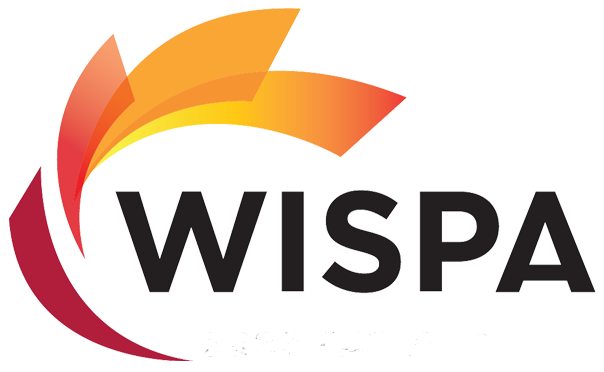
- 2024 WISPA Awards
- Manufacturer of the Year
- 2023 WISPA Awards
- Manufacturer of the Year
- Product of the Year (Our G1 Platform)
- President’s Award (awarded to Carl Guardino, our VP of Gov Affairs and Policy)
- 2022 WISPA Awards
- Manufacturer of the Year
- Product of the Year (Our G1 Platform)

- 2023 Fierce Innovation Award
- Next-Gen Deployment Wireless (Tarana G1 in 6 GHz)
Executive Team

Basil Alwan
CEO

Basil Alwan
CEO

Dirk Gates
SVP of Customer Experience

Dirk Gates
SVP of Customer Experience

Andy Hill
VP of Operations

Andy Hill
VP of Operations

Yongmin Zhang
VP of Engineering

Yongmin Zhang
VP of Engineering

Sri Reddy
President & COO

Sri Reddy
President & COO

Mike Calabrese
VP of Sales

Mike Calabrese
VP of Sales

Sud Verma
VP of Product Development

Sud Verma
VP of Product Development

Carl Guardino
VP of Government Affairs & Policy

Carl Guardino
VP of Government Affairs & Policy

Sergiu Nedevschi
CSO & Co-Founder

Sergiu Nedevschi
CSO & Co-Founder

Rabin Patra
Chief SW Architect & Co-Founder

Rabin Patra
Chief SW Architect & Co-Founder

Harry May
VP of RF Engineering

Harry May
VP of RF Engineering

Dale Branlund
CTO & Co-Founder

Dale Branlund
CTO & Co-Founder
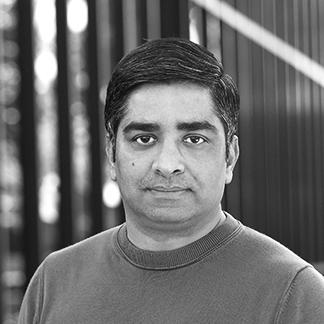
Rakesh Tiwari
VP of Product Management & Solutions Engineering

Rakesh Tiwari
VP of Product Management & Solutions Engineering
He brings more than 20 years of experience in network infrastructure covering a wide range of products including fixed wireless, backhaul, core routers, advanced switching, and consumer devices. Prior to joining Tarana, he served as Director of Product Management and Engineering at Trango Systems, where he led the development of their licensed microwave backhaul products. Rakesh has also held engineering leadership and software architect positions at IDT, Pluris, and Jasmine Networks. He holds a Bachelor of Engineering in Electronics from Bombay University and an MS in Computer Science, with an emphasis in networking, from the University of Southern California.
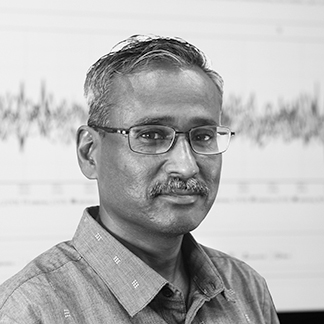
Kamaraj Karuppiah
VP of Software, Signal Processing

Kamaraj Karuppiah
VP of Software, Signal Processing

Terry Griffin
CFO

Terry Griffin
CFO

Steven Glapa
VP of Marketing

Steven Glapa
VP of Marketing

Eric Rebeiz
VP of Systems Engineering and Architecture

Eric Rebeiz
VP of Systems Engineering and Architecture
Board of Directors

Basil Alwan

Dinakar Singh
Prior to founding Axon Capital in 2005, he was at Goldman Sachs for 14 years, where he was a senior partner and ran the firm's highly profitable global equity proprietary trading business. He became the 2nd youngest partner in Goldman Sachs history in 1998, and in his time there served on the firm's Operating Committee, Partnership Committee, Risk Committee, and Asia Management Committee.
He is a Trustee of the New York Public Library, where he chairs the Investment Committee for the NYPL endowment. He also either currently or previously served on the boards of Columbia University Medical Center, Yale University Endowment Investment Committee, Rockefeller University, and Cold Spring Harbor Laboratories.
He is also the founder and Chairman of the Spinal Muscular Atrophy Foundation. The SMA Foundation was established to accelerate development of treatments for children with Spinal Muscular Atrophy, and has been the leading contributor to solution-driven research for SMA. Mr. Singh's daughter suffers from Spinal Muscular Atrophy, which was considered fatal and untreatable at the time of her diagnosis in 2001. Since then, the SMA Foundation has played a central role in the development of the three treatments that have been developed for the disease.
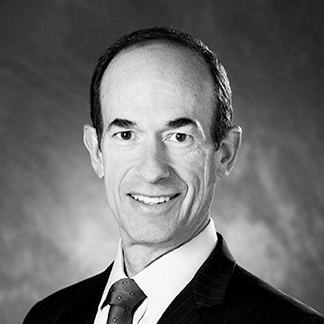
Adam Goldstein

Kanu Gulati
She has over 10 years of operating experience as a research scientist at Intel and Cadence, and was founding/early engineer at startups like Heavy.ai (hardware-accelerated data analytics), Nascentric (fast-circuit simulation tool, acquired by Cadence), and Atrenta (predictive analytics for design, acquired by Synopsys).
Kanu has co-authored 3 books, has authored 35+ peer-reviewed publications with 650+ citations, and holds a US patent. She has PhD & Master's degrees in Electrical and Computer Engineering from Texas A&M University, and a Bachelor’s in Computer Engineering from University of Delhi. Kanu completed her MBA at Harvard Business School, where she was President of the annual Venture Capital and Private Equity Conference. Her Erdős number is 3.

Dean Manson

Neil Sheridan

Dakin Sloss

Zia Huque
Zia served as the President and Chief Executive Officer of Deutsche Bank Securities Inc., the U.S. Broker Dealer of Deutsche Bank, from early 2018 until his departure from Wall Street in 2019. At Deutsche Bank, Zia was also Head of Equities, Fixed Income & Currencies for the Americas from 2016 to 2018 and Global Co-Chief Operating Officer of Corporate Banking and Securities from 2012 until 2016. During Zia’s 30-year finance career on Wall Street, he held multiple executive positions in the United States, Europe and Asia while leading investment banking, sales and trading functions spanning many industries, products, and clients.
Zia received his BA in Economics and Political Science from Williams College. He resides in Wyoming with his wife and two daughters and is active in the local community.


